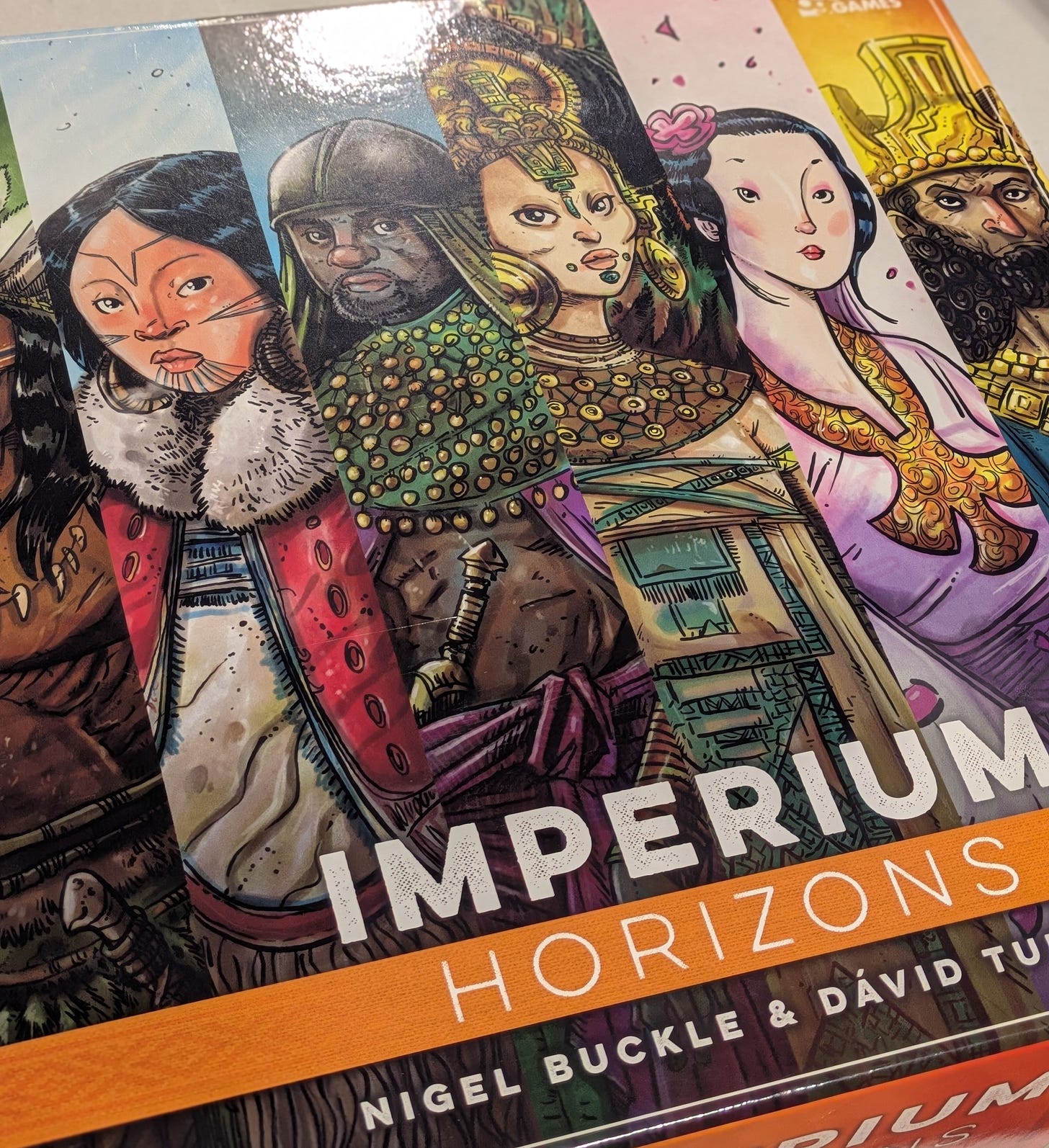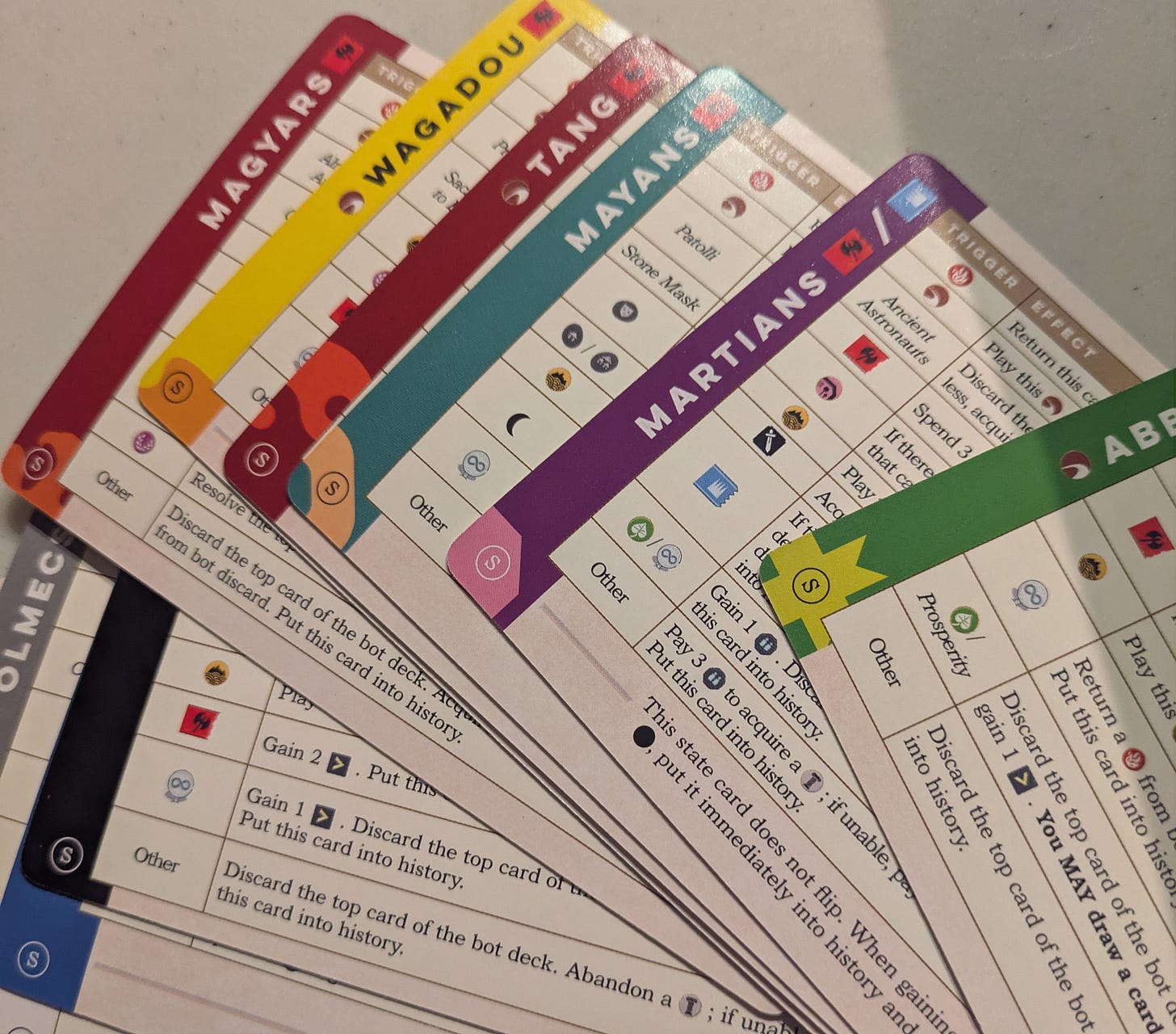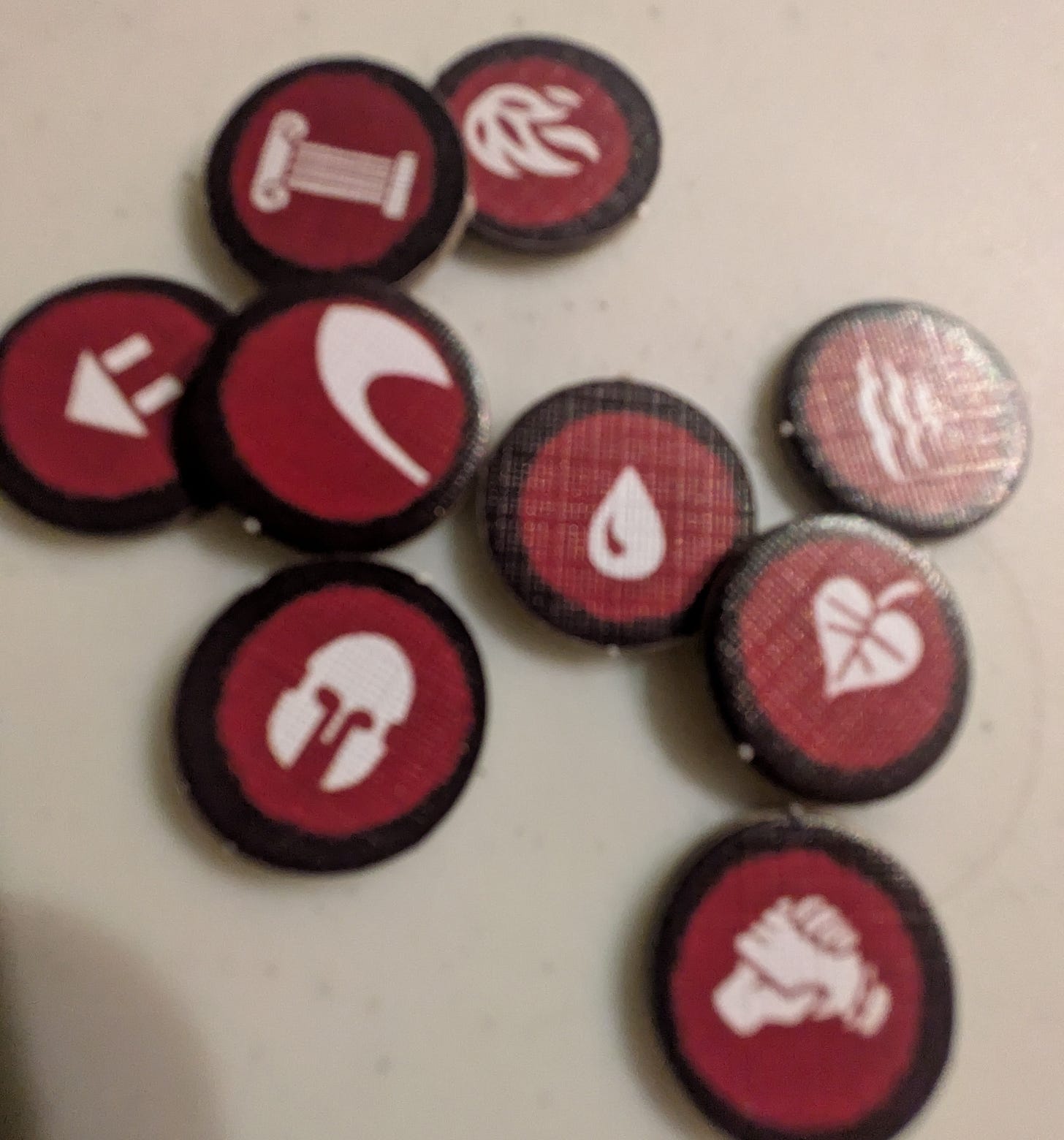Deck-Building at Its Finest With Imperium: Horizons, Classics & Legends!
I share how owning & playing Imperium: Horizons, Classics, and Legends makes this series one of the most exciting and rewarding deck-building experiences!
The Imperium series (Horizons, Legends, Classics) is a fascinating take on deck-building, blending civilization development with asymmetric cardplay.
You ever buy a game, love it, and then suddenly find yourself collecting the whole series? That’s exactly what happened with Imperium. I started with one, then another, and now I have all three—Horizons, Classics, and Legends.
With Classics offering the core experience, Legends adding more complexity, and Horizons refining and expanding the system, the question remains: do you need them all? As someone who owns and plays all three, Here’s my experience owning and playing the full trilogy.
My first was the most challenging, Legends. I had no idea what I was diving into; I just knew that Dávid Turczi designed the solo mode, and I had to experience this deck-building journey for myself.
It took me a while to grasp the rules and concepts in Legends and to fully appreciate how asymmetric the civilizations were. Once I got the hang of it, I started looking into Imperium: Classics. Initially, I thought these games were meant to be played separately, but I later realized that Legends could be combined with Classics. Once you understand the rules of one, transitioning to the other is easier.
This is when I got completely immersed in their world of civilizations. Each one has a rich history, detailed in the manual, which actually recommends reading them before start of the game. It also suggests skimming through the civilization cards to understand their unique mechanics and gain strategic insights.
Then Horizons was released and was added to my collection. It felt like I had reached the peak of board gaming. It introduces 14 more civilizations, bringing the total across Classics and Legends to 30, along with another set of common cards for the market!
Solo Mode
While you don’t need all three games to enjoy solo play, having access to 30 different civilizations ensures there’s always plenty of variety and no risk of boredom.
Each civilization in Imperium is designed asymmetrically, meaning that each one plays very differently from the others. This also extends to how they function as AI opponents. Their actions are deeply tied to their historical traits, which means their strategies and behaviors can be challenging to predict and counter.
Horizons introduces a new feature: large bot cards. Previously, the community relied on fan-made versions printed from BGG, which required referencing the original bot charts. This led to correcting inconsistent wording and ultimately reevaluating the overall balance and playstyle consistency. As a result, nine of the sixteen existing bots received meaningful updates.
Some civilizations are particularly aggressive, making it difficult to defend against their onslaught. Others may focus on long-term development or manipulation of resources, creating a dynamic challenge for players to navigate. The diversity in playstyle adds a layer of strategic depth to every game, keeping the experience fresh and exciting each time you play.
I’ve owned this game for almost a year now, and even after all that time, I still haven’t had the chance to explore every civilization. There’s so much variety that it never feels repetitive, ensuring that every playthrough offers something new.
Theme & Mechanics
As mentioned is a civilization-building deck-building game where players guide unique historical or mythical civilizations from barbarism to empire. Here are some differences between the 3 games:
Classics features well-known civilizations like Rome, Carthage, and Persia.
Legends introduces more mythological or less conventional civilizations, like Arthurians, Atlantis and Utopians.
Horizons expands the series with additional civilizations and mechanic like Inuits and Cultists
The Inuit have a unique State card that flips between Winter (Barbarian) and Summer (Empire) at the end of each Solstice, representing the changing seasons. This mechanic restricts players to playing or developing Empire or Barbarian cards on alternate turns. Additionally, at the end of the Summer turn, the player's hand size decreases by two, making the subsequent Winter turn more challenging due to fewer cards. This design reflects the seasonal cycles and survival strategies of the Inuit people.
The Cultists are fictional civilization which break away from the traditional barbarian-to-empire progression. Instead, they follow a unique path by completing four journey cards, which can accelerate the game's end. Highly aggressive, they thrive on chaos, disrupting opponents by relentlessly spreading Unrest throughout the game.
Gameplay
Each of the three Imperium games includes its own set of common cards, but they can be combined to create a unique and varied market deck. By mixing cards from Classics, Legends, and Horizons, players can explore new strategic possibilities and create fresh gameplay experiences.
To make this even easier, a PDF guide is available with five different pre-built common card sets, carefully curated from all three games. You can download it here: Imperium Mixed Common Card Sets.
Imperium: Horizons introduces the Trade Module to the series, bringing a fresh economic dimension with a new resource called "Goods" and a Merchant Action. This addition enhances player interaction and strategic depth, addressing a notable gap in Imperium: Legends & Classics.
With the Trade Module, players can place tokens on another player’s Merchant Card to gain benefits. While this may introduce some complexity for newer players, mastering it significantly enriches the gameplay experience.
To ensure seamless integration with the previous games (Legends & Classics), this why publishers have included 50 updated cards in Horizons. These updates are designed to balance the game and harmonize the new Trade Module with existing mechanics, ensuring a cohesive and enjoyable experience across the series.
Component & Features
The first thing I highly recommend are sleeving the cards. The card quality isn’t the best across all three games. With around 1,000 cards when combined, it’s a lot to sleeve, but considering the frequent shuffling, it’s absolutely worth it for longevity.
Another investment I made was in folded inserts. While the inserts that come with the boxes are decent, they don’t accommodate sleeved cards properly. Plus, managing 30 factions spread across three different boxes can be a hassle—you constantly have to remember from which box they came from!
These accessories actually motivates me to get the game on the table as the teardown and setup is a smooth process. Not only that, it organizes all the 30 factions with dividers and makes it easy to skim through them and select the faction you want.
They also provide 50 card updates and fixes for Legends & Classics in Imperium: Horizons - Compatibility Blog. A possible downside for those who buy Horizons first is that they’ll be left with an unused deck of 50 cards. It almost seems like a marketing tactic to push players toward Legends or Classics, though I could be mistaken. That said, it’s still a nice touch from the publishers to include this in Horizons.
A fantastic addition is the player area separators, which clearly define where to place your discard pile, development cards, and deck. They help keep the play space organized and structured.
Final Thoughts
When Classics and Legends were first released, it didn’t receive the highest ratings, both currently sitting around 7.8. In contrast, Horizons has significantly elevated the series, now holding an impressive rating of 8.6. Given how Horizons has refined the experience, I’m confident that if the publisher were to release an Imperium Deluxe edition that includes all three games, it would earn an epic rating.
Beyond the financial investment, the real cost was time. The sheer variety of civilizations will keep you engaged for months, constantly discovering new strategies and play styles. The depth and replayability of this series are unmatched, making every session feel fresh and exciting.
Bringing all three Imperium games into my collection was a costly and months-long journey—from Legends to Horizons, with accessories added later. Initially, I hadn’t planned to go all in, but the deeper I got into the game, the more it felt necessary.
I recommend starting with Classics or Legends to see if the game suits you. If it does, Horizons will refine and enhances the series even better. I feel all three games need to be combined If you want to fully immerse yourself in the world of Imperium and experience everything it has to offer, having the complete set is absolutely worth it!









